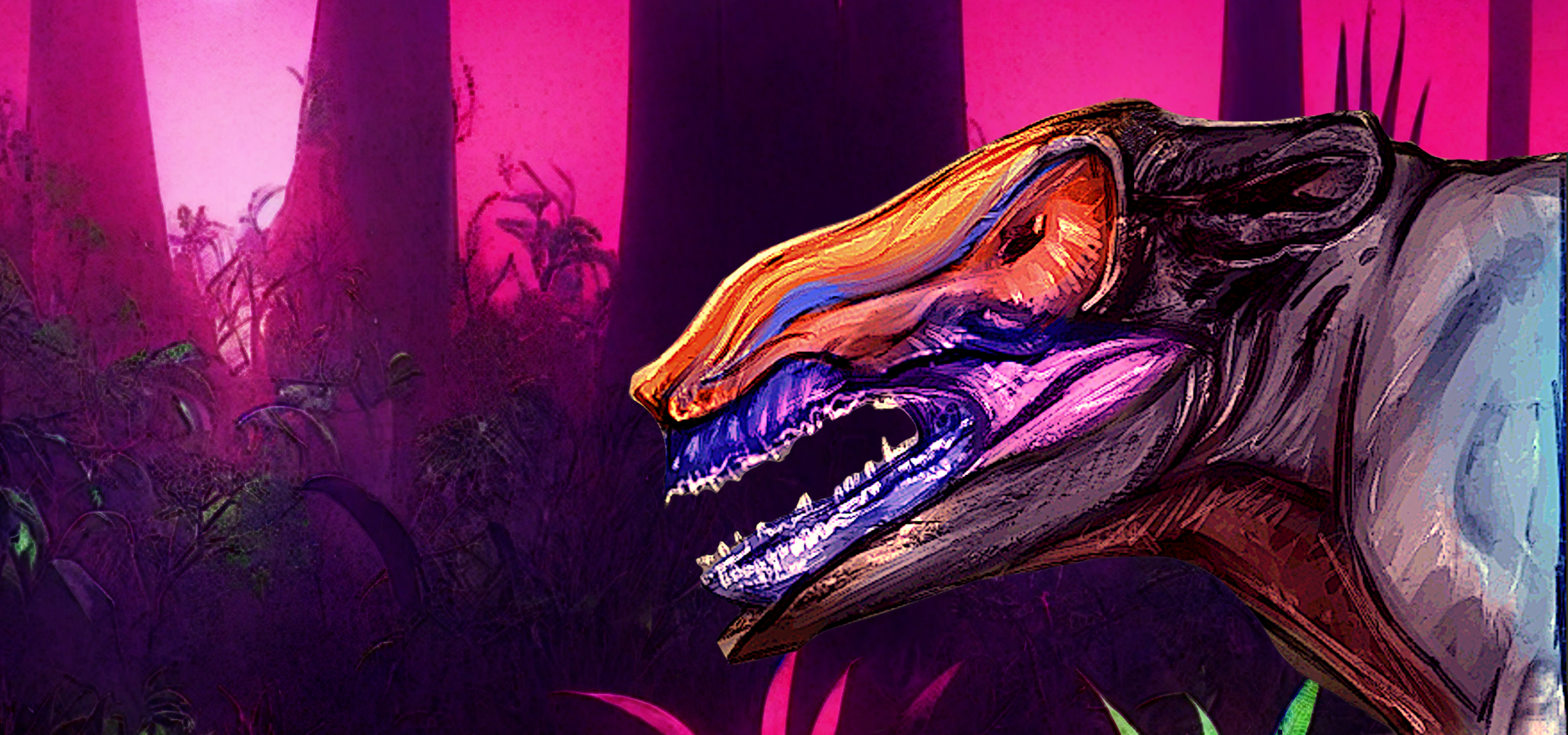The Tingra are a family of predator species native to the planet Jhoutai. They are pack hunters that have developed unique adaptations for the many harsh environs of the planet. While the Sazakraht are the notorious apex predator of the planet, the Tingra are not far below.
They live in almost every one of the major biomes of Jhoutai, from the multi-layered jungles of Tel-Nege to the harsh desert of the Kajh-Tai Region. In each Biome, they have evolved unique traits for survival, from camoflague to UV-light emitting organs. All tingra share the same approximate size, and they all hunt with a long jagged jaw with unique joints for cutting through limbs like a chainsaw.
We watched the feed of the team trekking the underbrush by the ultraviolet glow of Ansang. We knew they were around, we just didn't know how prepared they were.
Everyone saw the glowing reflections of the patterns on the Tingra's hides, lit up like a hologram under the UV. They moved in a way that made it hard to tell just how many of them there were.
Gunshots, screams, and sickening snarls dominated the hectic feed, it ended with the gruesome sliding crunch of the Tingra pack making a meal of the team.
We're going to need more guns.
Physiology
The Core Killer
The Tingra as a family of species has several features that are universal. The build of all Tingras remains the same. A quadrupedal carnivorous pack predator. All Tingra share the same spiked leathery hide that covers their entire body. Their jaws are shaped like a chainsaw; long and lined with a hardened layers of Keratin. Beneath the Keratin, sawtooth teeth that snap down with incredible strength.
The same Keratin grows at the top of the skull after reaching maturity, a full-sized Tingra pack can use their hardened skull to bash through bulkheads and many Corralum kinds.
A Tingra's shoulders are lined with a pair of long flowing fin-like appendages. These appendages are used for navigating, attracting mates, and have even evolved more uses in other subspecies.
A nasty bite
The most complicated part of the Tingra's anatomy is the joint and muscular structure powering the Tingra's bite. Where the jaws meet at the skull, there is a unique sliding joint that allows Tingra to saw their lower jaw when they clamp down. Muscles reaching all the way down to the shoulders give the Tingra a powerful bite force.
This evolutionary trait is linked with another natural competitor, the Rutas Olu. The Tingras jaws are superb at cracking through the shell and quickly amputating the limb underneath.
Hyper-Adaptive
The Tingra have always been a remarkably fascinating species to study.
Througout history, Tingra have migrated out and out and out from a central point somewhere in Khatoum, and with every new migration there were new mutations.
They adapt and evolve exceptionally quick, something we've learned to do as well.
The Tingra family has split many times from a single common ancestor. In each new environment they migrated to they adapted traits beneifical to survival in those regions.
| Region | Adaptions |
|---|---|
| Rotenagr'ra | Thick Hide, Resistance to Acid and Poison |
| Kajh-Tai | Specialized burrowing claws, thin uv-resistant eye protection |
| Amujnalden | Smaller than other Tingra, Commonly Domesticated |
| Nege-Tai | Chromatophores for Camoflague. |
| Faur'ridar'ru | Shoulder appendages activate in a bright flash of UV light, used to stun prey. |

